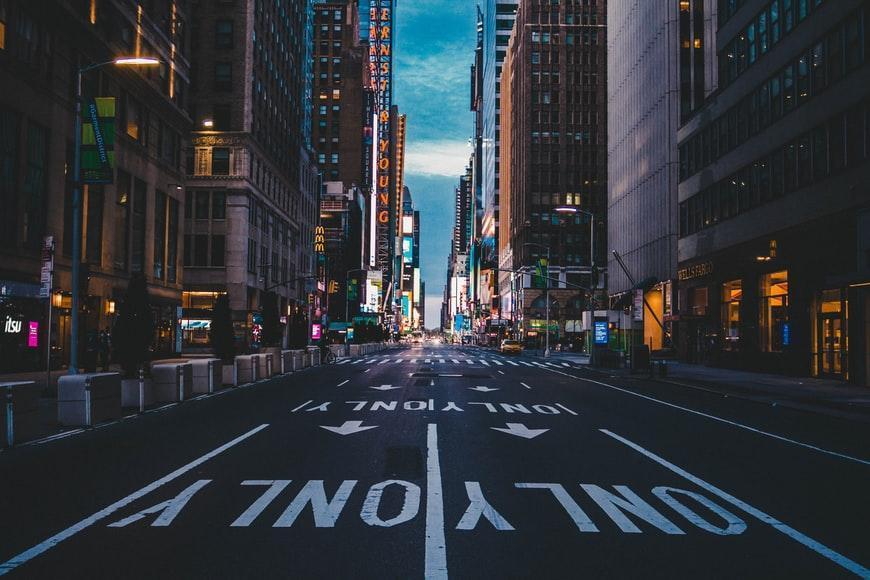

Waymo will start by mapping the city in preparation to deploy its fully self-driving vehicles.
Alphabet Inc’s autonomous driving arm Waymo, which spun out of Google’s self-driving car project, is deploying its autonomous vehicles in New York City. Beginning tomorrow, Waymo’s mapping vehicles start mapping the city in preparation for a more widespread deployment of fully-autonomous vehicles.
As one of the most densely populated cities in the world, New York poses difficult challenges for Waymo’s self-driving vehicles. The city’s streets are clogged with cars, pedestrians, bicyclists and delivery vehicles.
Waymo plans to launch an autonomous ride-hailing service in major U.S. cities called “Waymo One“, which is similar to Uber, Lyft and other ride-hailing providers. More recently, Waymo has been testing its autonomous vehicles in San Francisco.
“Autonomous vehicles hold the promise to dramatically improve traffic flow and expand access to convenient and affordable transportation for millions of New Yorkers,” said newly elected NYC mayor Eric Adams. “I’m excited to welcome Waymo to New York so that one day we can have safe autonomous technology on our streets.”
To successfully navigate in this challenging environment, the first steps for Waymo are to fully map the streets of New York City, since the company’s fleet of autonomous vehicles relies on high-definition maps with centimeter-level accuracy for safe navigation. These HD maps allow Waymo’s vehicles to navigate in places even where GPS signals are spotty, such as in tunnels or between skyscrapers.
With the backing of Google over the years, Waymo has emerged as a leading developer of self-driving technology. The company’s fleet of autonomous vehicles has traveled over 20 million miles on public roads in cities across the U.S., with billions of more miles in computer simulation to perfect its autonomous driving platform that Waymo calls the “Waymo Driver.”
For the time being, Waymo’s mapping vehicles in New York will be manually operated by autonomous specialists at all times, the company said.
Testing its vehicle in New York City will allow Waymo will give Waymo opportunities to learn more about how its Waymo Driver handles urban driving in snow, rain and other winter weather conditions. By assessing the way Waymo vehicles perform in inclimate weather, Waymo will be able to make improvements to its software based on real world scenarios, then apply these learnings across its entire fleet.
Waymo’s New York fleet, which will start with five Chrysler Pacifica minivans outfitted with hardware to support autonomous driving and mapping capabilities, will primarily operate south of Central Park. Waymo said its areas of operation will extend down through the city to the Financial District and the southern end of Manhattan, as well as out to a small section of New Jersey through the Lincoln Tunnel, which connects New York to New Jersey across the Hudson River.
Waymo will also be driving its zero-emission Jaguar I-PACEs electric SUVs equipped with its latest technology on the same streets in Manhattan. The company said the insights gathered will help the Waymo Driver improve its ability to perceive and predict the actions of other road users in dense urban areas.
“The more information we gather about the way our city moves, the closer we get to creating a more efficient, sustainable, and safe mobility network.” said Tech:NYC Executive Director Julie Samuels. “NYC is excited to welcome Waymo to New York to help us learn how our streets — from bike and bus lanes to highways and walkways — really work.”
In August, the Waymo One service opened to a select group of “trusted testers” in San Francisco. The company was recently approved to begin picking up passengers in its driverless vehicles for the first time, after years of extensive testing using safety drivers behind the wheel.
Waymo’s Trusted Tester pilot is a research-focused program that invites San Francisco residents to participate and help the company shape the future of fully autonomous ride-hailing. Waymo takes valuable feedback from its trusted testers to continuously improve its service.
Prior to opening Waymo One to its trusted testers, the company was picking up its own employees in the city.
Just like Uber and Lyft, the Waymo One service has a smartphone app where customers can summon one of the company’s self-driving vehicles. Once seated and bucked up, riders press the trip start button to begin their trip. A monitor installed in the backseat of each vehicle shows the vehicle’s perception systems in real time and riders get an expanded look at what the self-driving vehicle “sees” as it navigates autonomously in the city.
Riders also have a pull over button in case a passenger needs to cut their trip short. If a rider presses the button, the Waymo vehicles will pull over in a safe location and let them out.
Prior to launching the Waymo One service in San Francisco for select riders, the company has been testing its technology in the Phoenix Metro Area since 2016, mapping streets and improving its self-driving software for the Waymo One ride-hailing service.
In September, Waymo and Cruise LLC, the autonomous driving unit of automaker General Motors, were issued permits by the California Department of Motor Vehicles (DMV) to deploy their commercial self-driving vehicles in San Francisco and pick up paying customers.
The permits pave the way for a more broader deployment of the Waymo One autonomous ride-hailing services in the San Francisco Bay Area and in other major cities like New York.
Link: https://www.futurecar.com/4974/Waymo-is-Deploying-its-Self-Driving-Vehicles-in-New-York-City
Source: https://www.futurecar.com
















Leave a Reply